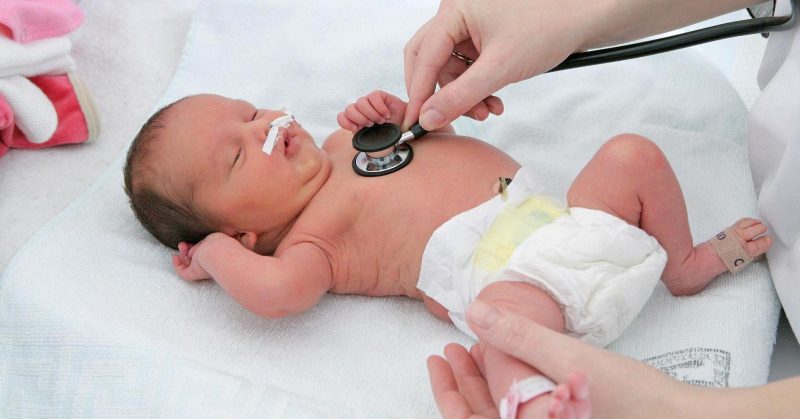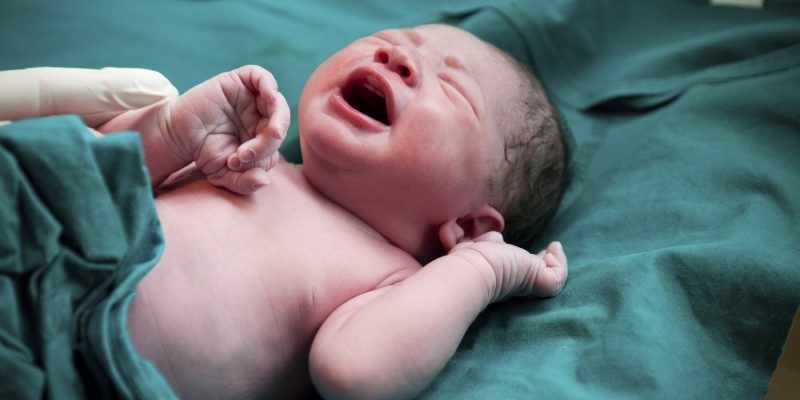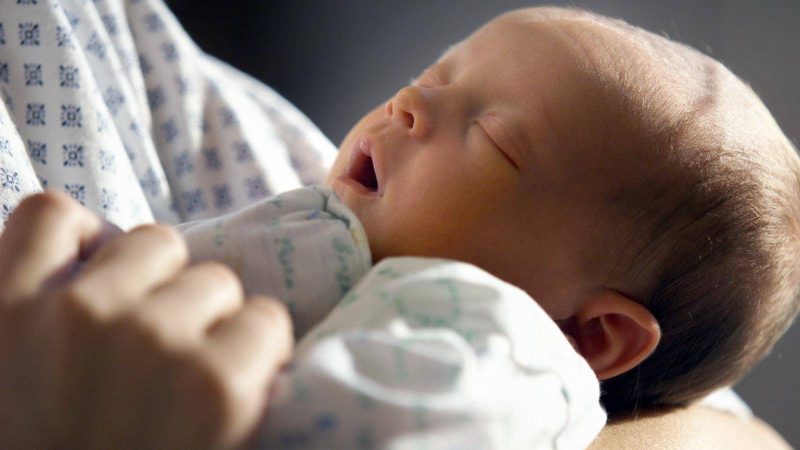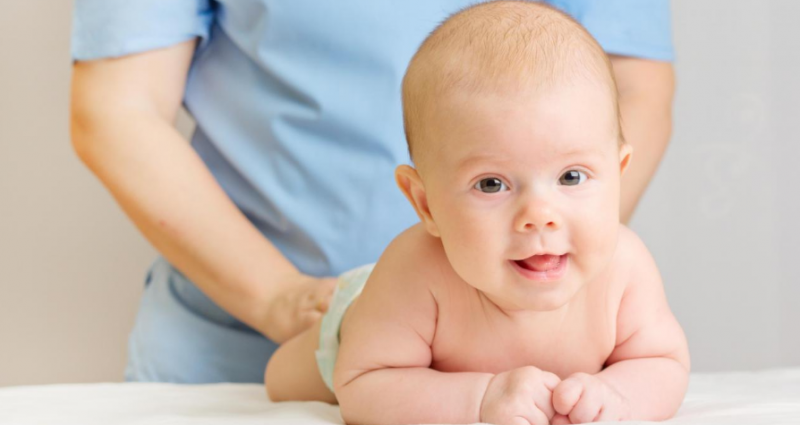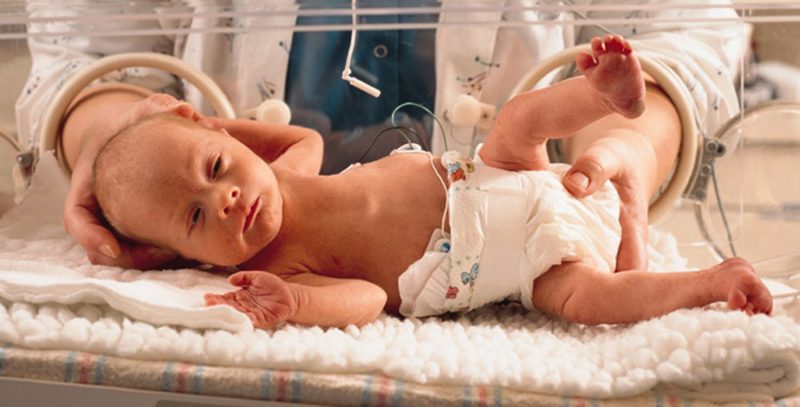Even people who have nothing to do with medicine often have to hear such a term as “perinatal damage to the central nervous system”. This diagnosis seems scary, but not so simple.
Material Content:
What is perinatal damage to the central nervous system
The perinatal period begins at 22 weeks of gestation and lasts up to the 7th day of the baby’s life, including the birth process itself.
Perinatal damage to the central nervous system in newborns is one of the most common diagnoses. And parents often panic. But in many cases, such a diagnosis is on duty, that is, a neuropathologist can put it even if only one reflex is broken. The birth process is very traumatic for the baby, since when passing through the birth canal it is almost impossible to avoid injuries. Therefore, in our time, more than 90% of children make such a record on cards.
The causes and features of the diagnosis
Doctors distinguish 4 types of causes:
- hypoxia in newborns (lack of oxygen);
- various injuries during birth and in the very first minutes of a child’s life;
- toxic and metabolic lesions (as a result of unreasonable use during pregnancy by a future mother of various toxins in the form of alcohol, drugs, nicotine, some medications);
- infections.
Hypoxic-ischemic lesion takes first place (up to 47% of all cases).
Classification and varieties of syndromes
During the PCNS, there are three main periods:
- Acute (first 4 weeks of life).
- Recovery: early (8-15 weeks); late (from 16 weeks to 12 months in babies born on time, up to 24 in premature infants).
- Outcome: the complete disappearance of all violations; preservation of some manifestations: developmental delay, hyperactivity syndrome; severe consequences: epilepsy, cerebral palsy, hydrocephalus.
Each period has its manifestations and symptoms, which doctors for convenience distinguish in the form of so-called syndromes. In approximately half the cases, one small patient may experience several syndromes at once.
At the first stage, these signs are most often distinguished:
- increased nervous excitability (increased or decreased tone, trembling, tremors, anxious sleep, frequent crying);
- vegetative-visceral (violation of the rhythm of the SS, unstable stools, marbling of the skin, strong gases, regurgitation);
- convulsive (periodic twitching of the arms, legs, head in the form of seizures, frequent shuddering);
- hypertensive hydrocephalic (increased intracranial pressure, fontanel swelling, anxiety, accelerated head growth).
The recovery period has similar syndromes, plus the following items are added to them:
- PMR delay;
- motor impairment.
If the child does not smile, does not babble, does not show any interest in toys and the outside world, you need to sound the alarm before it is too late.
Diagnosis of the disease
An experienced neuropathologist can already make a diagnosis upon examination. However, more fundamental studies of the central nervous system are often needed to confirm it: CT, MRI, Doppler ultrasound, and neuronosonography.
The latter method is used most often. Neuron sonography is an ultrasound of the brain, which is done until the opening of the large fontanel has been closed. This harmless method allows you to monitor the state of the brain, to identify modern disorders, as well as to suggest possible causes of such a condition.
Treatment methods and rehabilitation measures
A mild degree of pathology is usually treated with conventional massages and physiotherapy. In many cases, the child independently compensates for the violations found, but each baby needs a certain time for this - someone a month, someone two, someone six months.
However, this does not mean that the situation should be left to chance. If a child with mild disabilities is discharged from the hospital, parents should make every effort to alleviate or eliminate stress situations during the acute period of the disease. This means that it is necessary to limit contact with strangers in order to prevent infection of the baby, as well as protect the child from loud and sharp sounds, hypothermia, overheating. Nutrition is of great importance: breastfeeding can activate the recovery of the central nervous system and reduce the stress state of the baby.
Rehabilitation should be started as early as possible, since in the first months after birth, most disorders are reversible. Dead brain cells due to hypoxia can still be replaced by new ones.
Help for children with severe lesions is carried out in several stages:
- Help in the hospital: restoration of the full functioning of the main organs, treatment of identified syndromes.
- Treatment in the neurological department: drug therapy, therapeutic massage courses, gymnastic exercises, electrophoresis.
- Monitoring the development of the child in the 1st year of life: timely visits to specialists, compliance with their recommendations, therapeutic exercises, massage, therapeutic baths, swimming.
In the recovery period, it is very important to deal with the baby, developing his hearing, vision, stimulating emotions. These are the most diverse toys, developing rugs, books, vivid pictures, pleasant music. However, do not get too carried away with a variety of methods of early development, as this can be dangerous for a baby’s fragile nervous system. Everything needs to be done in moderation.
The timing of rehabilitation depends on the severity of the pathology:
- in mild cases, this period takes a maximum of 24 months;
- in cases of moderate severity, approximately 3 years;
- severe degree - until adulthood. In rare cases, young people with serious consequences are not able to service themselves, so they need lifelong help from relatives and relatives.
With adequate and timely rehabilitation, the prognosis for life and health is in most cases favorable.
The danger and consequences of PCNS in newborns
The consequences of perinatal damage to the central nervous system can be very serious. The most formidable diagnoses are well-known cerebral palsy of varying severity, hydrocephalus, epilepsy and other convulsive conditions.
In milder cases, these children are diagnosed with a delay in mental, speech, or motor development. At school age, children with central nervous system lesions often suffer from attention deficit disorder and hyperactivity disorder: it is very difficult for them to concentrate on one thing, they are constantly distracted, they cannot finish the job they have begun. In many cases, residual brain changes (residual effects after a lesion) manifest themselves again and again.
Preventive actions
A pregnant woman needs to be very careful about her health and state of health. In many cases, this helps prevent potential problems. Expectant mother needs to give up bad habits, undergo all examinations in a timely manner, treat the revealed infections, do not overload herself with physical work, visit the fresh air more often, eat right, and establish a sleep and rest regimen.
Unfortunately, no one is safe from childbirth problems, therefore, in the event of such a diagnosis, the newborn should not despair. Timely treatment started is designed to prevent the development of serious consequences. Preventive measures to prevent consequences should begin from birth, while the plasticity and susceptibility of the brain is still very high.


